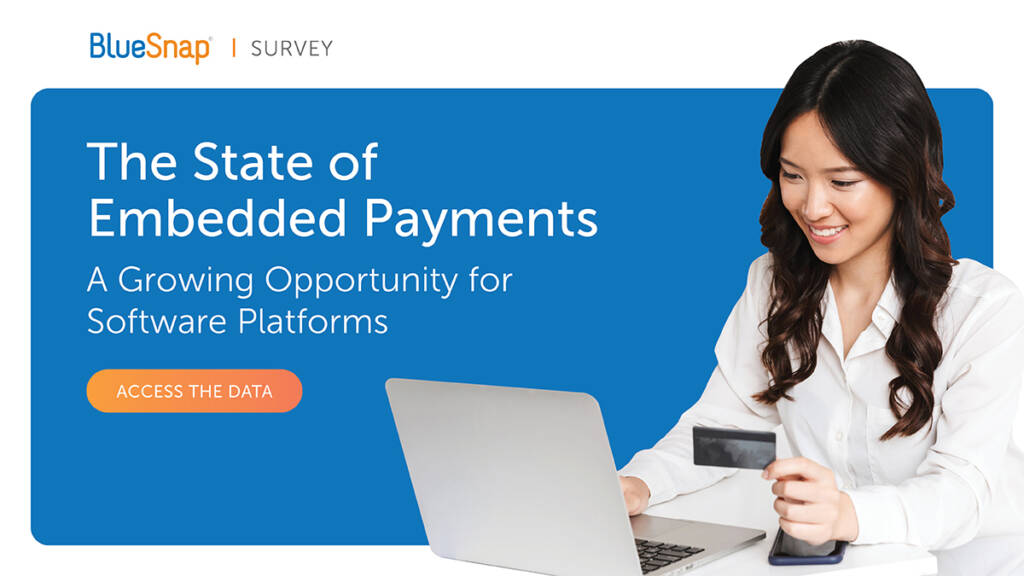Embedded payments is currently the fastest growing segment in embedded finance and it has been proven to produce positive business outcomes for software platforms. Software providers that sell white-label payments to their customers can attain a number of benefits, including gaining a competitive advantage, additional revenue and improved client acquisition.
Embedded Payments Provide a Competitive Advantage
According to our survey, The State of Embedded Payments, conducted in conjunction with Gartner Peer Insights, 48% of respondents said that embedding payments has given them a competitive advantage over other software providers. This is an interesting byproduct of embedding payments, as only 11% of those surveyed indicated that “Staying competitive in the market” was their primary reason for embedding payments into their software platform.
When asked how valuable offering a global payments solution to their customers is, 76% say it is very or somewhat valuable.
This shows that while many B2B software leaders implemented embedded payments in their platforms for other reasons, they are seeing substantial advantages from doing so.
Additional Revenue & Increased Client Acquisition
With a competitive edge and added value for customers comes an increase in revenue for software providers who offer embedded payments. Eighty-three percent of survey respondents either saw an increase in revenue, while only 16% said their revenue stayed the same, and less than 2% of respondents saw a decrease.
Additionally, 45% of respondents saw new revenue streams from monetized payments, while 33% reported increased client tenure and 34% reported increased average revenue per user. Embedded payments attracts new clients and encourages them to stay around for longer, making them more valuable for software providers.
Offering white-label payments to customers, makes software platforms more valuable, allowing them to generate more revenue.
Partner with a Payment Service Provider for Embedded Payments to Expedite Going to Market
When software providers decide to embed payments, they must choose to start by partnering with a payment service provider (PSP) or to become a PSP or registered Payment Facilitator themselves.
The biggest challenges faced by software providers that decided to build their own solutions and become a PSP/Payment Facilitator was:
- The technical resources needed (65%)
- The time it takes (48%)
- Staffing for associated roles such as compliance and underwriting (45%).
While some software providers may believe that their existing development teams are ideal for building an embedded payments solution in-house, they still have significant challenges to address in other areas, from obtaining a banking license to navigating industry regulations.
All of this likely explains why 89% of respondents chose to partner with a PSP to facilitate their embedded payments product. Software providers that work with PSPs like BlueSnap enjoy all the benefits of payment facilitation and selling payments to their customers without the need for additional technical resources, hiring or compliance efforts.
BlueSnap offers a range of embedded payment options for software providers, so the solutions can meet you where you are on your payments journey, as well as support where you want to go.

Related Resources:
- The Ultimate Guide to Embedded Payments
- Embedded Payments: The Premium Way for Software Platforms to Offer Payments
- Know Your Embedded Fintech Terms [Infographic]
Frequently Asked Questions
What are embedded payments?
Embedded payments are when payment functionality is embedded directly within a software platform, so clients do not need to integrate with another service to accept payments.
What are my options for embedding payments?
A few different models exist. You may be able to implement no- or low-code platform models without development help, but development resources are typically needed for implementations that have more customizable options. Depending on the model that you choose, your payments can be up and running in a day or two, or if you choose a more customizable model, a few months. You may also choose different fee structures, such as revenue sharing or buy rate.
How does embedding payments with a third-party partner work?
Using an embedded partner involves signing on with a partner that has developed embedded payments technology that your clients can access through your platform. The embedded payments partner will typically handle compliance, onboarding and customer support, depending on how you would like to structure the partnership.
What is BlueSnap?
BlueSnap helps businesses accept global payments a better way. Our All-in-One Payment Orchestration Platform is designed to increase sales and reduce costs for all businesses accepting payments.
BlueSnap supports payments across all geographies through multiple sales channels such as online and mobile sales, marketplaces, subscriptions, invoice payments and manual orders through a virtual terminal.
And for businesses looking for embedded payments, we offer white-labeled payments for platforms with automated underwriting and onboarding that supports marketplaces and split payments.
With one integration and contract, businesses can sell in over 200 geographies with access to local acquiring in 45+ countries, 110+ currencies and 100+ global payment types, including popular eWallets, automated accounts receivable, world-class fraud protection and chargeback management, built-in solutions for regulation and tax compliance, and unified global reporting to help businesses grow.

